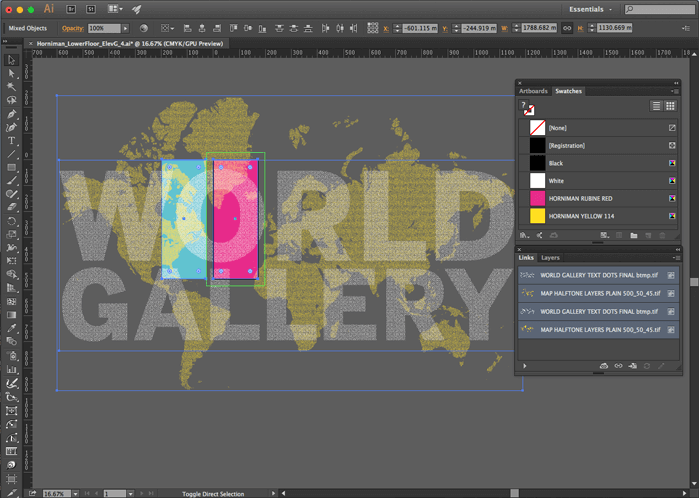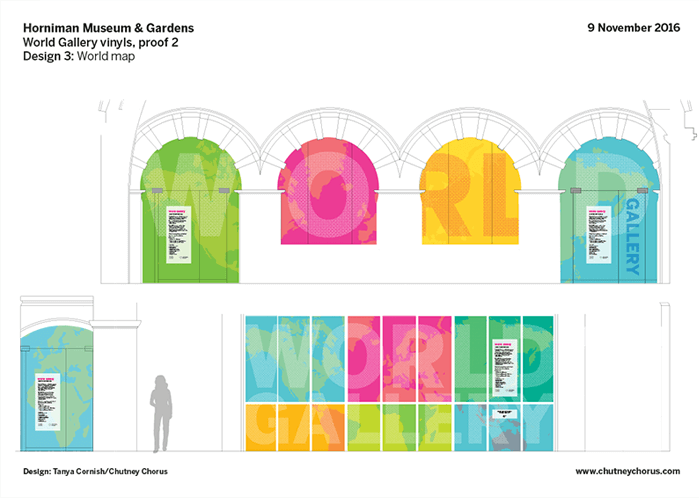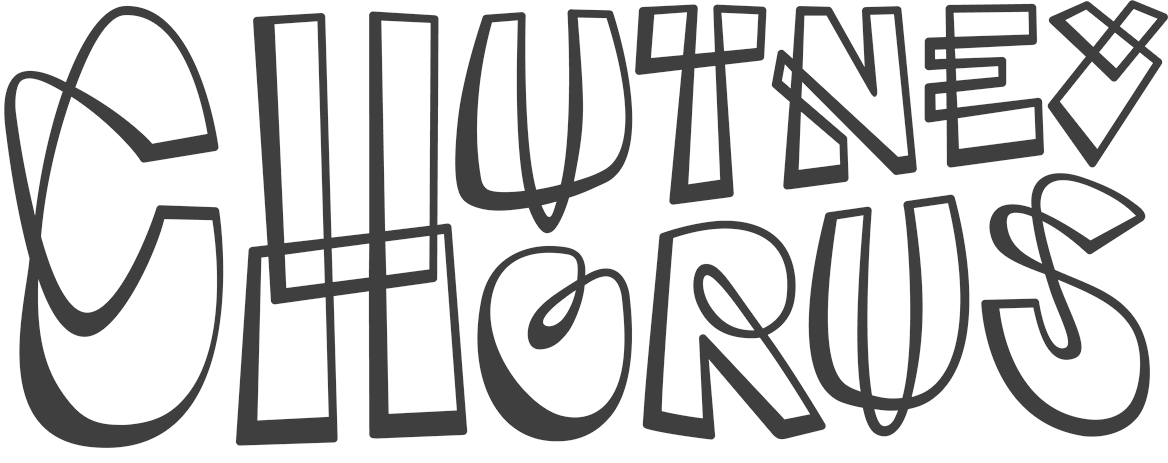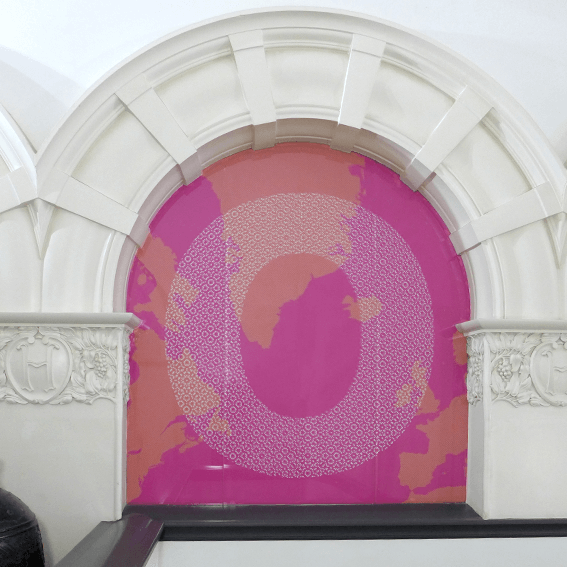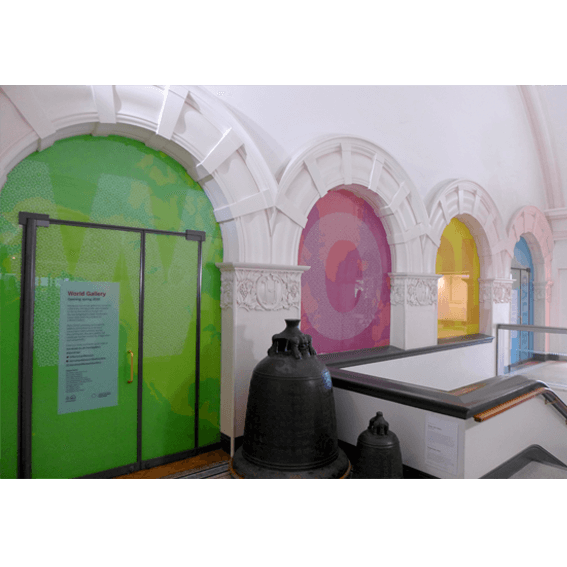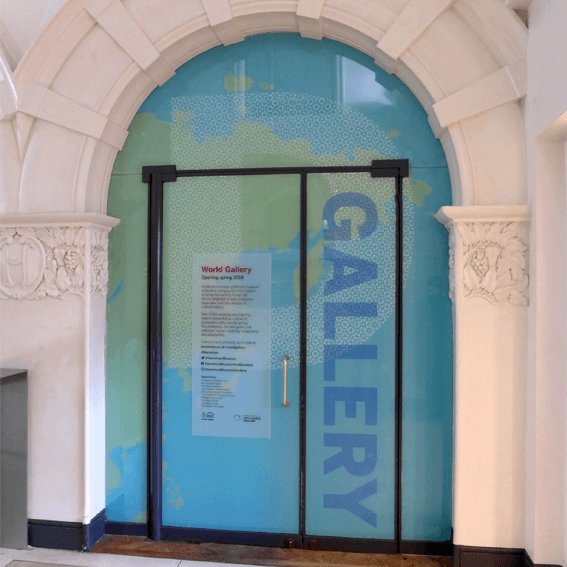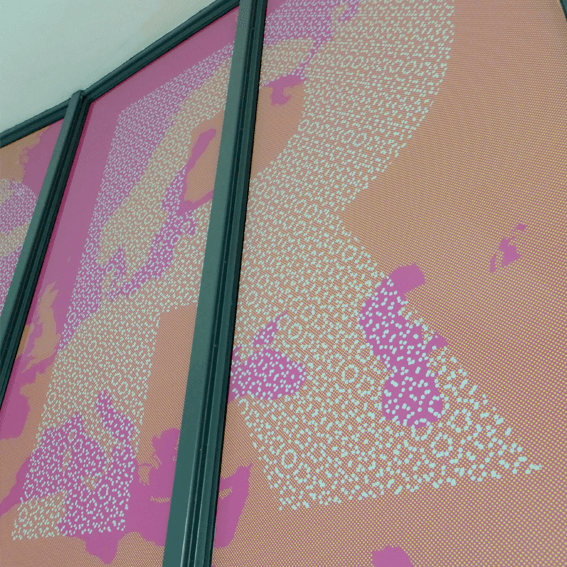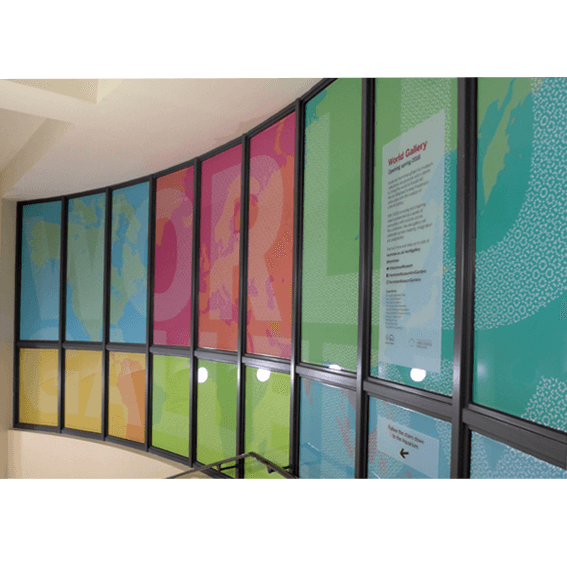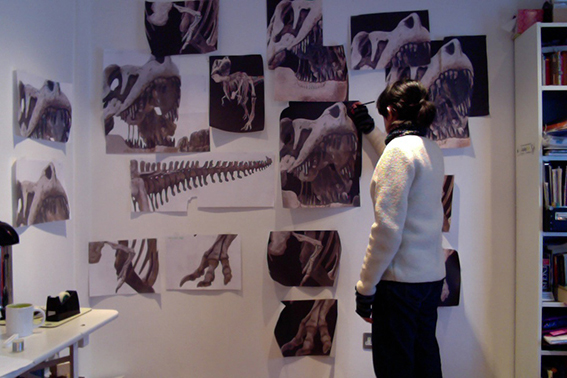Horniman Museum and Gardens approached me to create this identity for the temporary closure of their galleries while they create the new (and very exciting) World Gallery.
Rather than talk about the design as I usually do, I thought I'd talk shop instead. The 'design' part of my work takes up about 20% of the total time spent on any job. And the rest? It's all technical, technical ... and technical. But what does that mean?
It means thinking about how visitors enter and move around the space: what will they see from where? How legible will the graphics be from a distance?
It means thinking about how a job will be installed: will the vinyl go outside the glass (sticky back) or inside (sticky front)? (The larger part of this job went inside the glass to avoid the cost and inconvenience of scaffolding.)
It means working to accurate dimensions, or 'dims' as we call 'em in the trade. The dims have to be accurate down to the millimetre and include all fixtures and fittings or things can go seriously awry ... imagine trying to cover an A4 book with a standard envelope. (Oh dear.)
And most of all, it means a lot of work in Photoshop, Illustrator and Indesign. Here's a quick overview of the digital work that went into the project:
- The explanatory text panels were created in Indesign. (They were installed on the outside of the glass so they can be updated easily without removing all the large colour graphics.)
- The large letters were created in Illustrator and converted to vector halftones. This looked great but the file sizes were way too big. Bigger files can slow you down – unwise if you work to deadline. To counter this, I took them into Photoshop and converted them to bitmap TIFs which, having only black pixels, are much smaller than colour images.
- The map was originally a vector/Illustrator file which I converted to halftones in Photoshop, running it at different dot sizes until I got a pleasing result.
- I brought the above two sets of files back into Illustrator to layer, crop and colour them into the x25 sequential files that make up the job. See below for a pic of all the elevations plus a screenshot of an Illustrator file.
Each of these processes takes time and much like creating anything, you have to take a few runs at each stage before you can clamber over the top. And here we are on the other side of the job. Nice.
http://www.horniman.ac.uk/about/anthropology-redisplay
(post by Tanya)
